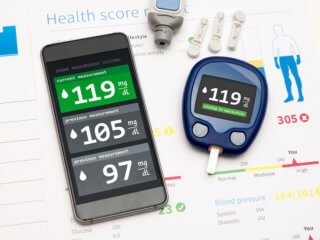The robotic insurgency into medicine has finally arrived, and it is nothing like anyone had imagined. Conventionally, when most people think of robots, they envision an android shape with metal joints and mechanical arms, or an industrial tool and picks metal and scrap. However, the idea is not about futuristic, mechanical robots; it’s about intelligent software robots that automate virtually any business activity. Robotic process automation (RPA) employs an intelligent software-based robotic digital workforce that lowers the costs associated with repetitive, manual intervention in a system. In a nutshell, it uses software, commonly known as “robot” to capture and interpret existing IT applications to enable transaction processing, information control, and correspondence across multiple IT systems.
Robotic process automation: a replacement for monotonous jobs
The concept behind replacing humans with robot technology in the health care space is quite intriguing. For example, a database of medical products and services needs to be updated from a set of catalogs. The products are not from a single source, and the data operator has to skim through the catalogs to obtain the required data and then update the necessary fields in the products and services spreadsheet. This process can be tedious and time consuming with high possibilities of errors. This is where Robotic Process Automation can play a significant role. A highly proficient RPA system can be adopted to replace the data operator, hence reducing human error and manual effort to complete the task.
| Recommended for you | |
| Ingestible robots | |
| Robots in medicine | |
| Key medical robots manufacturers |
Impact of RPA in healthcare
According to statistics, by 2020, the predicted evaluation for global IT robotic automation market should be USD $4.98 Billion, with the noteworthy shareholding in the health care sector. This can have large scale impacts on the labor intensive domain of the health care space. Slowly and steadily, RPA can be applied to diverse applications like cataloging of medical equipment, purchase and requirement, data entry, migration, account management, claims processing, customer support, data and employee management and administration. This technology will be self-sufficient in providing job opportunities as there will be an exponential increase in the demand for people skilled in managing, executing and maintaining the systems.
Employment creator or employment killer?
Just like the analogy of a coin, RPA has its pros and cons. The health care industry is of the early adopters of this technology, providing a paradigm shift from being labor intensive to a more digitized and automated one. Additionally, the benefits of RPA are not restricted just to the financial aspect. They also offer procedural and customer-based opportunities for performance improvement.
Pros
- Increases proficiency and the speed of any process.
- Increases accuracy and precision.
- Automated monitoring of accounts payable/receivable.
- Elimination of human error by digitalizing patient records.
- Improves the patient care experience in a unique way.
Cons
- Time constraints: In the case of outsourced RPA’s, quite a lot of time will be lost in dealing with legalities, contracts, and red tape.
- Technology Constraints: In addressing the demands of a particular organization, there should be some level of flexibility. Different companies will have various systems and hence wide range of requirements. The solution provider should have a sturdy design catering to all the needs of the organization.
- Job Security and Layovers: The most important disadvantage of the lot. Automating a process called for a shift in the roles and responsibilities of the employees. Day to day procedures, previously done manually will be outsourced. This will lead to downsizing within the organization.
RPA: some food for thought!
While potential snags in implementing RPA need to be looked into, it can be seen that the benefits outweigh the disadvantages. So the million dollar question is, “Will RPA be a job killer or a job creator?”. It definitely is a debatable issue and with the influx of RPA in health care; there will cause reduction in staffing, the usual mundane tasks will be automated, there will be stiff competition for jobs that require personnel skilled at managing and operating automation systems, but in the end, looking at the bigger picture, the entire process will be more systematic and efficient. I guess it will be fair to say that people will lose their jobs, but here is where the concept and adaptation play its part. Evolution is something RPA will help health care providers not only reduce expenses and streamline exercises but also improve the quality of patient care.
Image credit: www.istockphoto.com

















